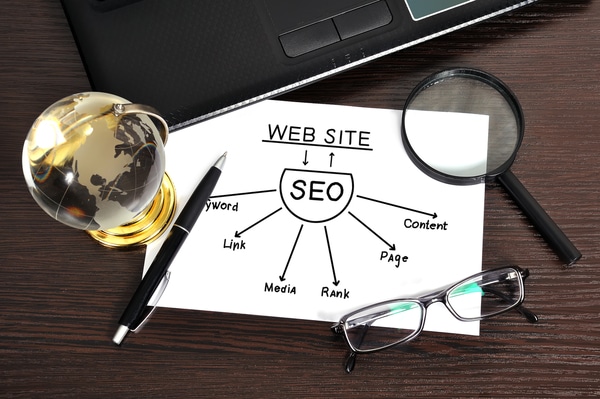SEO, or Search Engine Optimization, is a way to make sure that your website content ranks high on search engine results.
Search Engine Optimization, or SEO, is the process of optimizing your website so that it ranks higher in search results. This can be achieved through many different strategies and tactics.
SEO is a long-term strategy that involves analyzing your audience’s needs and wants and then developing content around those needs and wants. This helps you get more traffic to your website so you can convert them into customers or clients!
The end goal of SEO is to get traffic from the search engines to your website and convert that traffic into sales and leads.
Conversion is the most important goal, but you can also measure it by looking at other metrics like time spent on a page, bounce rate (the percentage of visitors who leave after viewing only one page), or conversion rate (the number of people who buy something divided by total visits).
In addition to measuring how many people visit your site after clicking on an organic link in search results, there are also ways you can use analytics software like Google Analytics to track conversions directly:
- How many clicks did we get from social media?
- Which keywords led us to new customers?
The most popular way people find information online is through Google, Bing, and Yahoo.
The most popular way people find information online is through Google, Bing, and Yahoo. These search engines are the major players in this space and account for over 90% of all searches in the world. However, there are other lesser-known search engines that you should be aware of as well: DuckDuckGo (DDG) and Baidu being two examples.
There are several ways for you to get your website on the first page of the search engine results, including improving your content, implementing backlinks and social media, increasing your authority and domain age, and more. But SEO is a long-term strategy that requires patience and consistency. It’s not something you can do overnight; it takes time to see results from all these different strategies working together in unison.
An SEO strategy requires continuous measurement to evaluate performance and adjust accordingly.
An SEO strategy requires continuous measurement to evaluate performance and adjust accordingly. The most important thing you can do is track your analytics data, which will tell you how well your website is doing in terms of traffic, leads and conversions.
For example:
- If a page has high bounce rate (the percentage of visitors who leave after viewing one page), it’s likely that those visitors don’t find what they’re looking for on that page or they don’t like what they see there. You should re-evaluate the content on this particular web page and make changes if necessary so that future visitors don’t have similar experiences.
- If a specific keyword doesn’t rank well for certain keywords related to it (e.g., “blue shoes”), then maybe there isn’t enough information about blue shoes on this particular web page or maybe something else needs improvement before people start searching for blue shoes at all times – such as improving their brand awareness among potential customers through advertising campaigns using keywords such as “blue suede shoes” instead!
Start with good content with keywords optimized for search engines
As the name suggests, SEO marketing is all about optimizing your content for search engines so that it can rank higher in their results. You need to start with good quality content before you can begin your journey into the world of SEO marketing.
- Good quality: Make sure that the content is original and relevant to your audience’s needs. It should be easy to read and understand by anyone who reads it without having any technical knowledge about web development or marketing strategies (this includes both customers and potential employees).
- Updated regularly: Even though Google has said that freshness isn’t an important factor anymore (they actually said “it’s not a ranking signal”), still try updating your blog posts regularly because it helps keep visitors engaged with your website longer which means more time spent reading articles from them which increases chances of getting clicks on ads displayed on those pages later down road when someone searches online using keywords related with those topics being discussed there – this could lead into conversions such as purchases made through eCommerce platforms like Amazon where people buy products directly through links provided by sellers themselves rather than searching directly inside stores like Walmart where prices tend sometimes go lower than what sellers charge elsewhere but there’s no guarantee they’ll get anything done right away since these retailers may take weeks before responding back once contacted via email).
Conclusion
The best way to get started with SEO is by creating good content. This means having an optimized title, description, URL and image that will entice users to click through and read more about your product or service. Once you have this foundation set up, then it’s time to start implementing other strategies like backlinks (links from other websites pointing towards yours), social media posts with relevant hashtags (#SEO #Marketing) etc. These tactics can help increase your website’s authority in Google rankings over time which will lead them directly towards becoming number one when people search for specific terms related


